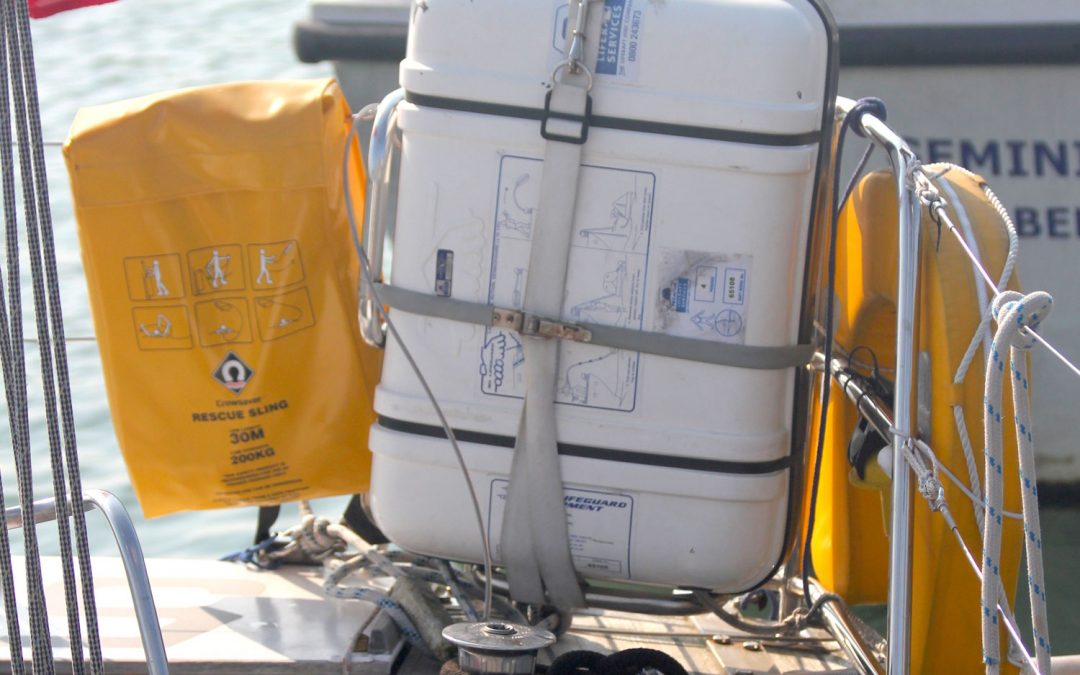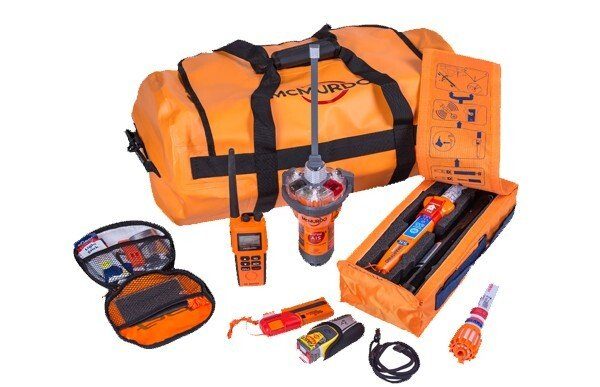A liferaft is an essential piece of equipment to carry on offshore or coastal passages and should be regularly serviced by professionals according to manufacturers’ recommendations.
Liferafts should be stowed where they are ready for immediate launching. All crew should know the location of the liferaft and know how to launch, inflate and board it. They should also know what equipment it contains.
Types of liferaft
There are two international standards for liferafts – SOLAS and ISO 9650. SOLAS are heavier duty types and may not always be suitable for pleasure craft. There are two categories of ISO 9650 – “Type 1” for offshore navigation and “Type 2” for coastal navigation.
Skippers should ensure that their vessel is fitted with a liferaft that is designed to cope with the conditions they will encounter, is equipped accordingly and can accommodate all crew. Equipment will vary depending on whether the raft is specified for survival periods of less than, or more than, 24 hours. However, in all cases the equipment packed in the raft will be of only a very basic level. This is why it’s important to also have a grab bag of essentials available, as well as emergency water in a portable container.
Typical life-raft contents
Basic specification:
- Two paddles.
- 2 red hand flares.
- Bailer and sponge.
- Waterproof torch.
- Lifesaving signal cards.
- Floating knife.
- Drogue (sea anchor).
- Repair kit.
- 6x seasickness tablets per person.
- Rescue quoit with 30m floating line.
- Top-up pump.
ISAF specification:
As above, plus:
- Water pack.
- Additional flares.
- First aid kit.
- Thermal protective aids.
- Signalling mirror.
- Seasickness bags.
Grab Bag
In the event of having to abandon ship, it is recommended to have a designated waterproof dry bag to carry essential emergency items. These might include items already in use on the boat, as well as some already stored in the bag.
Minimum grab bag contents include a handheld GPS, handheld VHF, PLB or EPIRB, flares, sea sickness pills, duplicate medication for any crew members that rely on regular medicinal drugs, torch and batteries, first aid kit, thermal protective aids, water, ship’s documents and personal documents such as passports.
It’s worth noting that the biggest dangers to survivors in a liferaft are from exposure and dehydration. Even in the height of summer, in north European and north American waters it’s possible to die from hypothermia within a few hours, so staying dry and having a suitable supply of warm clothes are the most important priorities.
Next is the need for water – while it’s possible for a healthy adult to survive for a few days without water, deterioration is rapid. However, we can survive with no food for much longer – up to a month in some cases – so food is much lower on the priority list than is generally realised. By the same token, a means of signalling distress – ideally an EPRIB – should be very much higher on the list.
This is a summary of the minimum grab bag contents the International Sailing Federation (ISAF) recommends for vessels used offshore:
- Flares: 2 red parachute, 2 red hand flares and cyalume-type chemical light sticks.
- Watertight hand-held Electronic Position Fixing System (eg GPS).
- SART (Search and Rescue Transponder).
- Combined 406MHz/121.5MHz or type “E” EPIRB.
- Water in re-sealable containers or a hand-operated desalinator plus containers for water.
- Watertight hand-held marine VHF transceiver plus a spare set of batteries.
- Watertight flashlight with spare batteries and bulb.
- Dry suits or thermal protective aids or survival bags.
- Second sea anchor for life-raft with swivel and >30m line diameter >9.5 mm.
- Two safety tin openers (if appropriate).
- First-aid kit including at least 2 tubes of sunscreen. Dressings should be capable of being effectively used in wet conditions. The kit should be clearly marked and re-sealable.
- Signalling mirror.
- High-energy food.
- Nylon string, polythene bags, seasickness tablets (min 6 per person).
- Watertight hand-held aviation VHF transceiver (if race area warrants).
- Medical supplies including any for pre-existing medical conditions of any crew member.
- Spare unbreakable spectacles for any crew members needing them.













